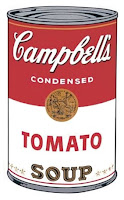Ernest Rutherford
Ernest Rutherford was a chemist from New Zealand who became known as the “father of nuclear physics”. He got his degree in New Zealand and worked as a school teacher there until he moved to the United Kingdom. He worked at Cambridge and Manchester and became a professor. He was awarded the Novel Prize because he contributed greatly to physics with his discoveries. In 1911, he discovered that atoms have a small charged nucleus that is surrounded by empty space and is orbited by small electrons (Rutherford Model of the Atom). However, even after this discovery, in 1919 he came to discover the proton.
WHAT IS A PROTON?
The proton was thought to be an elementary particle until the discovery of quarks was made. A quark is an elementary particle with an electric charge equal to 1/3 or 2/3 that of the electron. The proton is made up of two up quarks (lightest of all quarks) and one down quark (most stable quark). Gluons hold these quarks together. The proton is found inside of the nucleus in an atom, and it produces POSITIVE electrical charge. Its mass is approximately 1 1.67 x 10-27 kg, its charge is approximately 1.602 x 10-19 Coulombs, and its diameter is approximately 1.65 x 10-15 m.
EXPERIMENT:
The proton was first noticed by Rutherford when he was converting nitrogen into oxygen through a nuclear reaction. While he was shooting alpha particles into nitrogen gas, he saw spots of hydrogen nuclei being released. When the shooting of the alpha particles into the nitrogen gas was over, Rutherford realized that the scintillation detectors (flash of light) showed the hydrogen nuclei came from the nitrogen. He made the conclusion that nitrogen was made up of hydrogen nuclei, and he named the hydrogen nucleus the “proton”. Next, Rutherford shot positive alpha particles towards gold foil. He expected all of the particles to go right through the foil, however he was surprised. Some of the alpha particles went through, and other bounced back. He discovered that the alpha particles were bouncing back because the atom was composed of a dense nucleus in the center which was surrounded by empty space with electrons orbiting around the nucleus. However, he analyzed that the positive particles were bouncing back because there was some kind of positive charge inside of the gold foil in order for it to be able to repel the alpha particles. Then he thought that there should be positive charges within the atom in order to balance the negative electrons and create an electrically balanced atom. His discovery proved that the protons were concentrated in a tiny fraction of the atom’s volume.

Rutherford's Atomic Model
These videos are helpful to understanding Rutherford's discoveries.
IMPORTANCE:
The discovery of protons was important because it helped in the development of the atomic theory, which allowed for a better understanding of home molecules work and bond together. It also helped Rutherford realize that one element could be transformed into another by the process of shooting the element with alpha particles. The proton is a very important part of the periodic table because it determines the number of electrons in an element and it also determines which exact chemical each element is. Overall, the discovery of the proton is very important and has helped many discoveries after Rutherford’s time.
Citation:
Rutherford Picture:
Cyprus. Amazon, n.d. Web. 6 Oct. 2010.
ErnestRutherford.html>.
Rutherford Information:
The Physics of the Universe. N.p., n.d. Web. 6 Oct. 2010.
.
Writer, Max. "The Story of the Proton Discovery and the People Behind it."
articledashboard. N.p., n.d. Web. 6 Oct. 2010.
The-Story-of-The-Proton-Discovery-and-the-People-Behind-it/1580858>.
Proton Information:
"What is a Quark?" wiseGeek. N.p., n.d. Web. 6 Oct. 2010.
.
Jones, Andrew Zimmerman. "Proton-Definition of a Proton." About. N.p., n.d. Web.
6 Oct. 2010. .
Atomic Model Picture:
"Rutherford's Experiment and Atomic Model." The Internet Encyclopedia of
Science. N.p., n.d. Web. 6 Oct. 2010.
imgres?imgurl=http://www.daviddarling.info/images/
Rutherford_atomic_model.jpg&imgrefurl=http://www.daviddarling.info/encyclopedia/
R/
Rutherfords_experiment_and_atomic_model.html&usg=__en1bz_dtmTkrrW2ltRZKj6QKD48=&h
=160&w=158&sz=10&hl=en&start=0&sig2=wddcZnvX4mCkLOr1_1-ChQ&zoom=1&tbnid=BZNT48tWc
IjsrM:&tbnh=120&tbnw=119&ei=Fj6tTI_RAcHflgeOtqnQBw&prev=/
images%3Fq%3Drutherford%2527s%2Batomic%2Bmodel%26um%3D1%26hl%3Den%26biw%3D1280 %26 bih%3D553%26tbs%3Disch:1&um=1&itbs=1&iact=rc&dur=466&oei=Fj6tTI_RAcHflgeOtqnQBw&e
sq=1&page=1&ndsp=21&ved=1t:429,r:0,s:0&tx=92&ty=89>.
Experiment:
Admin. "Who Discovered the Proton?" Everyday Guide. N.p., n.d. Web. 6 Oct. 2010.
.
Also diagram of experiment:
"1919 Discovery of Protons." ORACLE Think Quest. N.p., n.d. Web. 6 Oct. 2010.
.
Videos:
http://www.youtube.com/watch?v=bSEOOMs5VNU
Importance:
"Discovery of Proton and Neutron." eHow. N.p., n.d. Web. 6 Oct. 2010.
facts_5183474_discovery-proton-neutron.html#ixzz11dc0tA5Z>.























